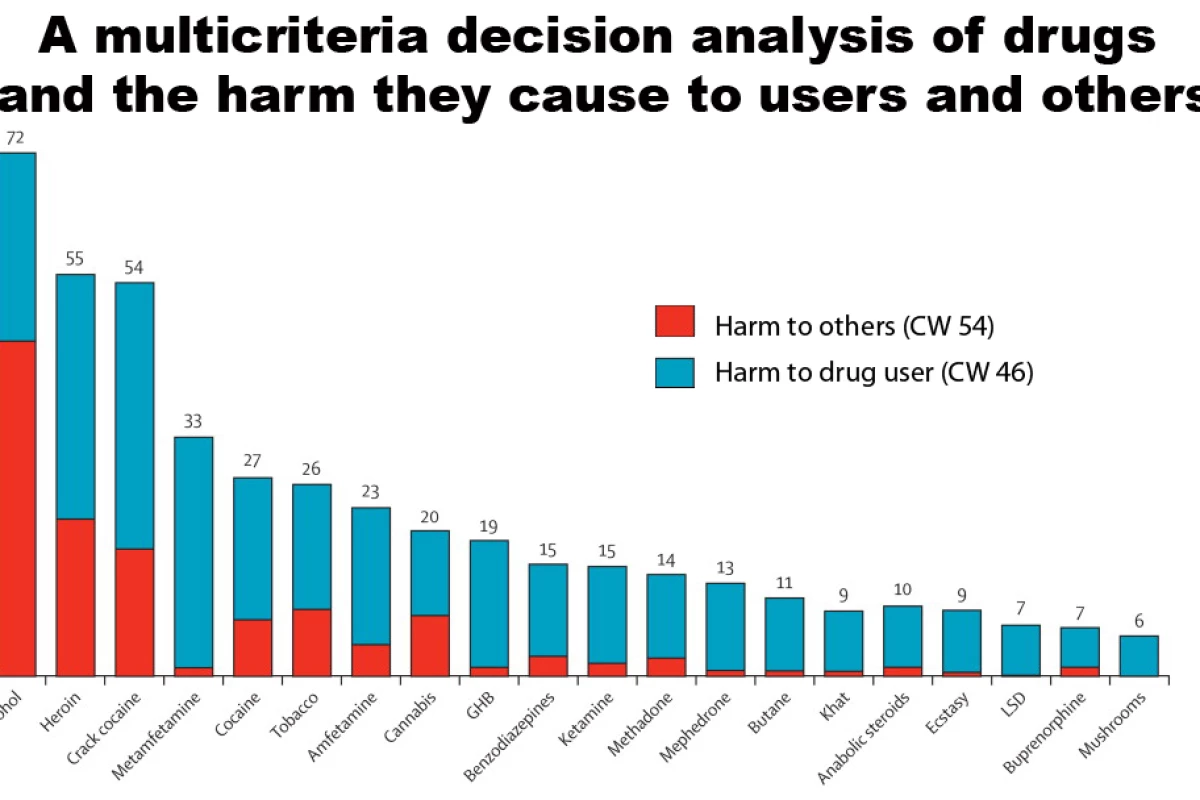One of the more interesting news items of the last week came from the release of the Independent Scientific Committee on Drugs’ first piece of research – Drug harms in the UK: a multi-criteria decision analysis. The findings of the committee, based on wide ranging criteria, apply scientific methodology to answering the perpetually vexing question of exactly how much harm certain drugs do to their users and those around them.
The accompanying table summarizes the findings and the full paper is available free on the web, where you’ll see just how complex the equation actually is. Most interesting of all was that without government meddling and industry lobbying, alcohol was rated more harmful than any other drug, while tobacco (the only other taxed legal drug on the list), is more harmful than cannabis.
The Independent Scientific Committee on Drugs was set up after British Home Secretary Alan Johnson sacked Professor Nutt from his role as the head of the Advisory Council on the Misuse of Drugs (ACMD) in 2009. ACMD is the UK's official drugs advisory body and Johnson sacked Professor Nutt for saying cannabis was less harmful than alcohol.
The Independent Scientific Committee on Drugs was founded to investigate and review the scientific evidence relating to drugs, free from political concerns.
Nutt is not pro- or anti-anything – he is a scientist and science is our only true friend when it comes to making informed decisions on any subject, but particularly about the effects of one of mankind's greatest problems and its effects on society. The Committee’s aim is to provide accessible information on drugs, drug harms, benefits, regulation, education, prevention, treatment and recovery.
According to the report, which is available free (once you have registered at the Lancet), the most harmful drugs to users are crack cocaine (37), heroin (34) and metamfetamine (32), whereas the most harmful drugs to others are alcohol (46), heroin (21) and crack cocaine (17). When the two-part scores were combined, alcohol was the most harmful drug by a huge margin, followed by heroin and crack cocaine.
Professor David Nutt's has just launched a new blog. This is recommended reading for anyone with an open mind to finding a better way.




